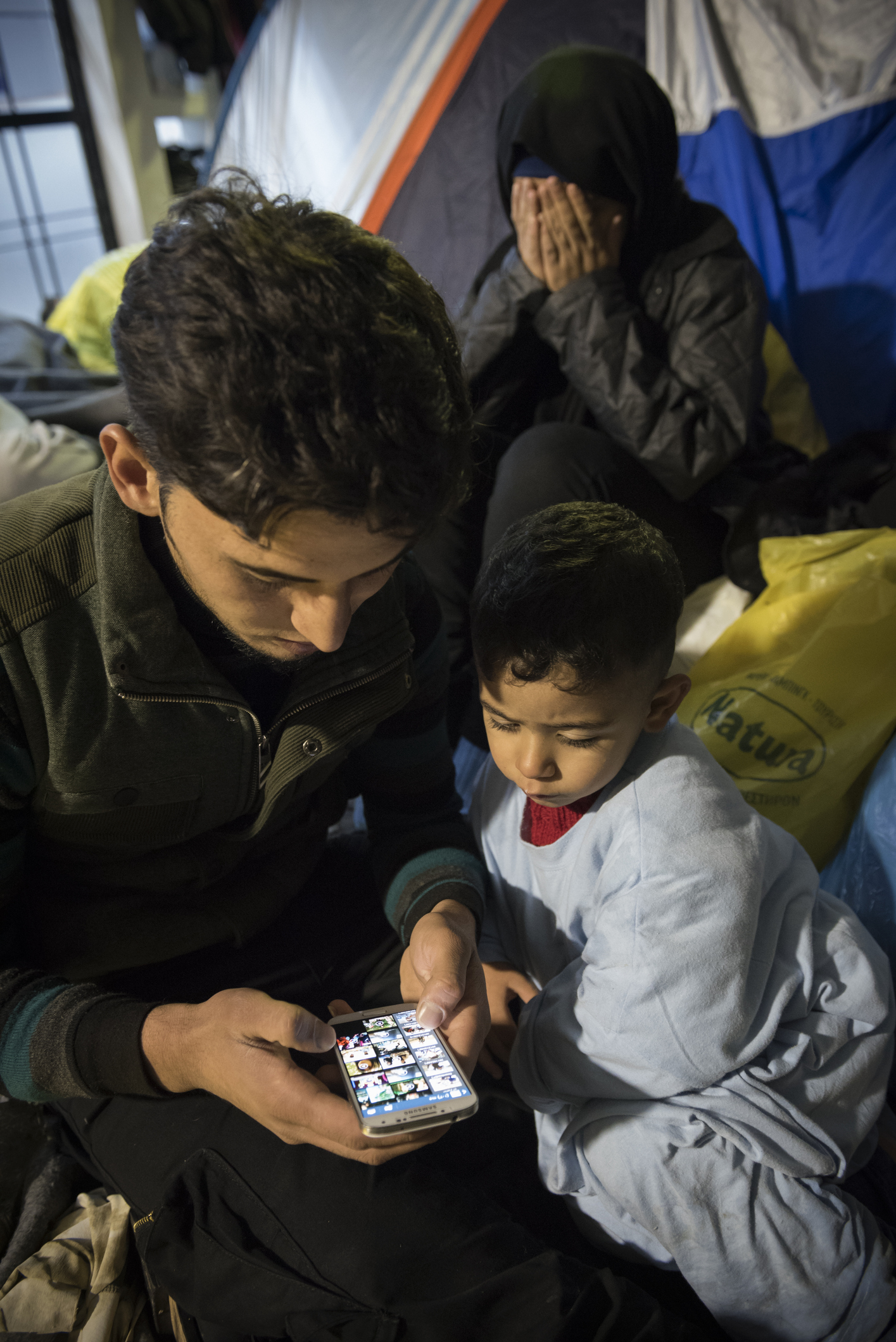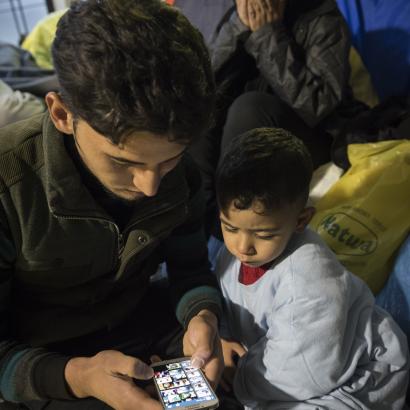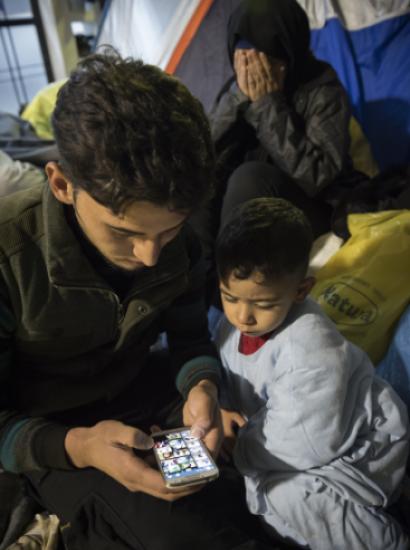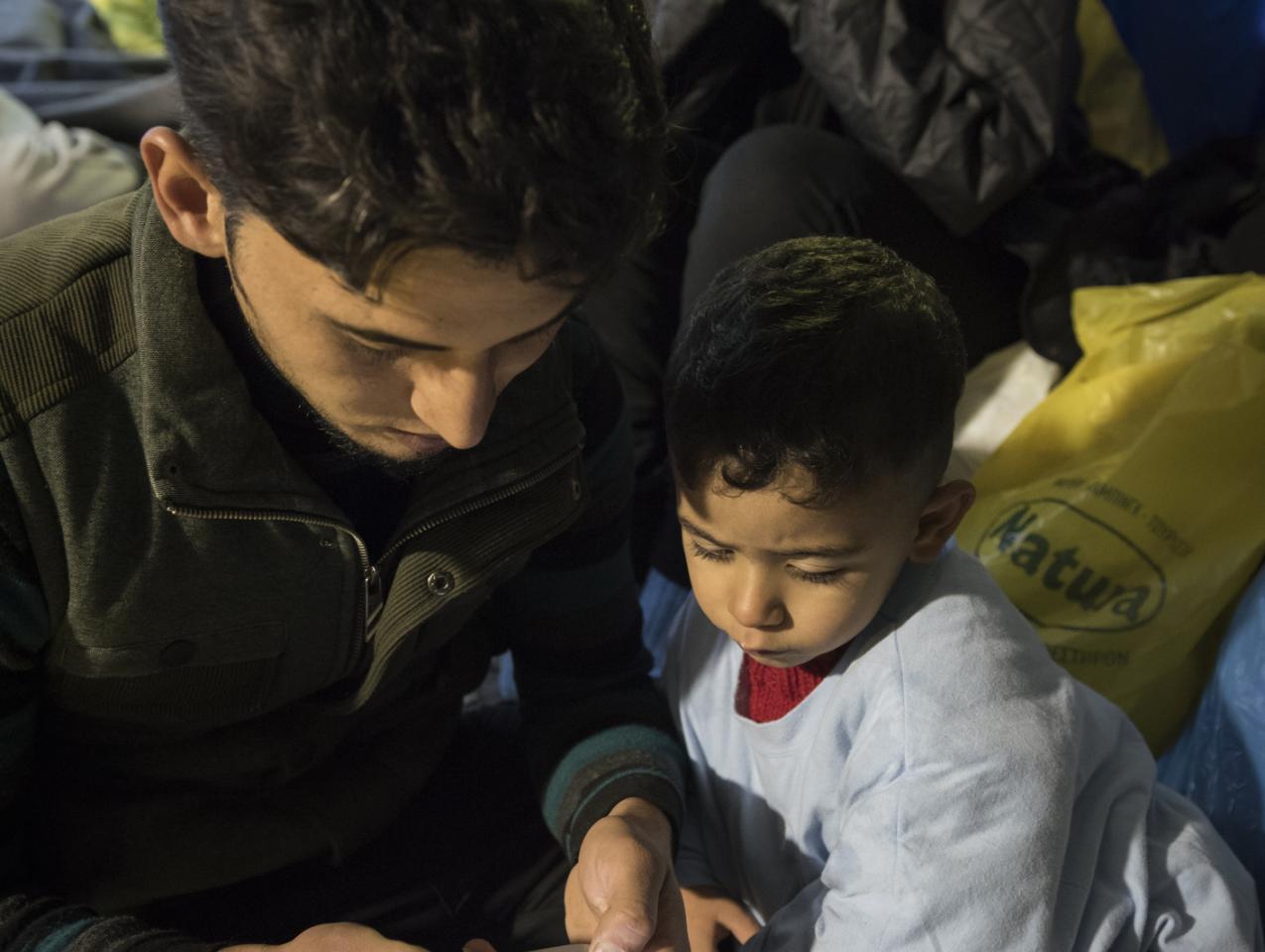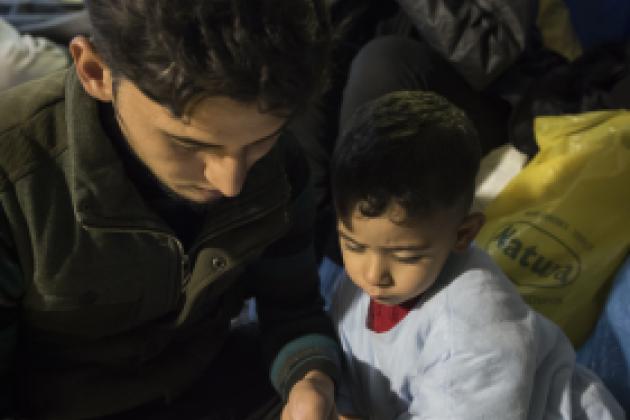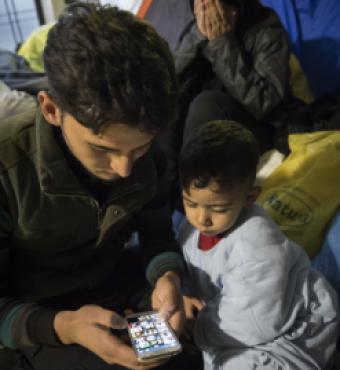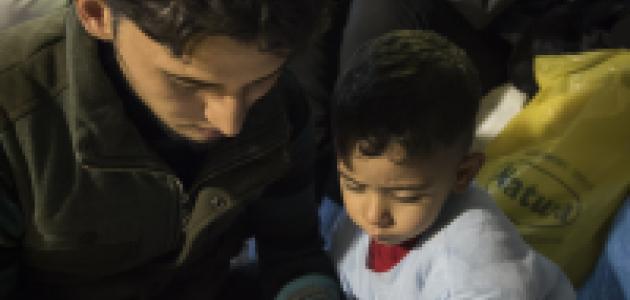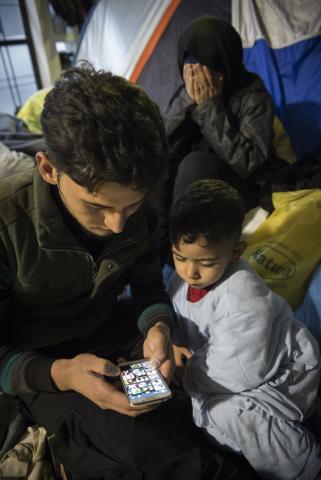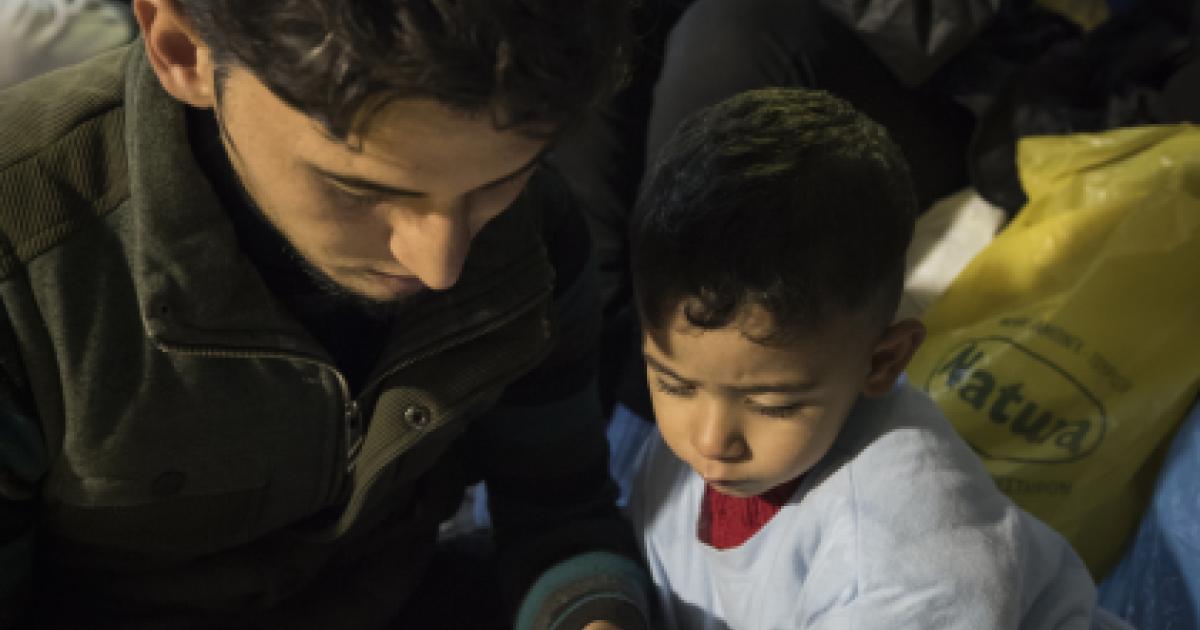This essay combines the first-hand experiences and analyses of two young Syrian activists. One, Kassem Eid, survived the sarin gas attack and starvation siege of his Mouadamiya suburb of Damascus. He has written extensively in opinion pieces on the subject of the revolution in Syria. Qutaiba Idlbi’s work has focused on the accountability of aid organizations. He speaks widely on the nature of the Assad regime and the cause of the opposition. He was twice imprisoned by Assad’s intelligence services at the age of 21.
Kassem Eid:
Growing up in the dictatorship established by Hafez al Assad in Syria was hard for almost everyone outside Assad’s family and his inner circle. A military dominated by loyal members of the Alawi sect and nearly a dozen brutal intelligence branches kept the population in a state of poverty and constant terror. Anyone who dared to speak against Assad was crushed.
To keep the Syrian people under control, Hafez al-Assad created a bubble through the tight management of state media. Cable TV, the internet, newspapers, magazines, and even books that offered a perspective at odds with government propaganda were all forbidden. My own life-line to the outside world was the magazine my late father would smuggle to our home – Readers Digest. It was from this incendiary literature that I learned English and came in contact with life beyond the big prison that was Syria. I learned that people in other countries live a lot better than we do and that they elect their president and governments. And that their presidents do not keep electing themselves.
In 2000, Hafez al-Assad died and his son Bashar became president of Syria. It took the Syrian government all of five minutes to amend the constitution to accommodate the son’s 34 years of age. The youthful eye doctor, educated in London, promised to bring change and to open up the country to the world through free trade and technology. The free trade was anything but. Both commerce and technology were tightly controlled by Bashar’s cousin, Rami Makhlouf, who owned the only two cell phone companies operating in Syria, private TV channels, private newspapers, private radios and internet – and almost every private company and bank in Syria.
It took less than two years for computers and the internet to become wildly popular in Syria. In 2002, when I was almost 16, I started working in an internet café near our home in Moudamiya. At that time, most of the customers were teenagers who came to play online video games or use online chat websites.
Many websites were immediately blocked by the government, but we found our way around that by using false IP’s. Many young men learned how to become hackers, and computer shops opened in Damascus where programs, games and software that normally sold for a hundred dollars or more could be had for sometimes less than a dollar.
For the Syrian government itself, the internet proved a much more nefarious device. Undercover intelligence officers working for Bashar used the internet to recruit jihadists from Syria and other parts of the Arab world, encouraging them to go to Iraq to fight against the United States. After Saddam Hussein was toppled, the Assad government was convinced that the Syrian regime would be the next target in the American sights.
Online chat rooms calling for jihad, videos on YouTube showing civilians killed by the United States forces, songs calling for jihad and praising Al Qaeda, imams like the famous Abu al Qaqaa (who turned out to be an undercover Syrian intelligence officer) preaching publically about the importance of jihad in Iraq – all that was once forbidden to talk about suddenly became legal – and desirable. The regime used online media to whip up an exodus of young Syrians and other Arabs to go and kill American soldiers. The Sinjar documents recovered by US troops, attest to the extent of this flow of fighters and underscore the effectiveness of the Syrian regime’s use of social media.
***
From a different angle, Qutaiba Idlbi describes the paranoia and brutal response on the part of Assad’s government to the unregulated, unauthorized use of the new medium taking hold in Syria.
Qutaiba Idlbi:
On one of the nights in May 2011, I heard the heavy booted steps coming towards my cell. Moments later the door was opened, and I was taken to the interrogation room once again. Since the beginning of the uprising in Syria, I had been reporting for international media on the events inside the country. Now, I was detained in the headquarters of the Syrian political intelligence after they discovered part of the network I was working with to do my reporting. When I arrived at the interrogation room, I was met by a man who introduced himself to me as a computer engineer major specializing in social media. He wanted my help in logging on to my Facebook account. After attempting to log on, it became evident to me that my family had deactivated my account and changed my password. My interrogator, however, was only aggravated by the fact that my Facebook was in English, which was incomprehensible to him. After 14 failed attempts, he finally accepted the explanation I concocted on the spot – that Facebook had developed a mechanism to shut down accounts of those they know are being detained by the government. He even called in his superior to explain how I had helped him uncover this mechanism!
Social media existed in Syria before the Arab Spring started in 2010. But up until that point, it was largely used to stay in touch with family members abroad, particularly given the very social nature of Syrian culture. But when the video of Mohammed Bouazizi setting himself ablaze on the streets of Tunis surfaced in December of 2011, things changed rapidly. From this point on, two different arguments about the new technology developed. Its defenders claimed that social media was a tool for crowding and marketing in the service of democratizing society, while, on the other side, its critics pointed out that repressive regimes and dictators across the Middle East used it to collect data on activists and their roles by invading those cyber communities. Both assessments are valid.
In the very early days of the Arab Spring uprisings, social media penetration of Arab communities was relatively low in Syria –about 1% in 2010, available only to the upper middle class and wealthy urban families who had the resources and were interested in a real line of communication beyond their communities. When the Arab Spring ignited, social media was the tool by which the activists in those classes reached out to the world – not only to report on events on the ground, but to speak to the West, in particular, in the hopes that governments and people there would stand by them in their demands for freedom and democracy. Social media became a platform to share information internally as well. Those on the front lines of demonstrations in one part of the country looked to present their distinct local message and identity and to learn about what was happening in other regions of Syria.
Social media was not the spark that lit the Arab Spring, as some contend. This assertion disregards entirely the thousands of people who sacrificed their lives to encourage others to overturn the system that had oppressed them for so long. It discounts the profound social, political, and economic distortions that led to the explosions of 2010 and 2011. What’s fair to say, however, is that social media fanned the flame of protest and helped to spread it across the Middle East from Tunisia to Egypt to Libya to Yemen and to Syria. It provided people with a platform to unite their voices and their messages. “The germs of #Syria salute the rats of #Libya and pray for their quick victory” was one such message from July of 2011, mocking the derision towards their own people that their respective rulers regularly expressed. Social media has indeed been an effective tool in the hands of those seeking the betterment of their society, opportunities commensurate with their education and aspirations and deeply resentful of the deteriorating social conditions, unemployment crisis, tyranny and political corruption. Social media has become the primary tool used by youth who have been thwarted at every turn to express their anger and frustration in unprecedented and creative ways. It has undoubtedly contributed to the rebuilding of a collective identity during the current uprisings, embodied in the slogans, music, art, and clothing on the streets of Tunis, Cairo, Tripoli, Sanaa, and Damascus, that paved the way for the Arab Spring revolutions.
From the government’s point of view, social media was the mechanism for breaking through the siege it had laid around society – both actual and cyber (in terms of media blackouts) – through which regimes sought to contain the uprisings. Social media, in general, brought the fear of the unknown into the heart of the Syrian government. In my first detention, my admission that I maintained a Facebook account with 700 friends prompted my torturers to administer additional electric shocks. Social media had become the government’s primary concern. As more newly motivated youth joined the opposition movement, the coordination of social media became more fluid. This broadened the movement but it also galvanized the government to put more resources into training and equipping its intelligence services to be able to control the movement through social media. Although it took some time, this new approach by the government proved very effective in monitoring and stalking activists in order to counter the opposition’s messages. It came to be known as “The Electronic Army.”
It’s important here to keep in mind the complex process of political mobilization and its various stages, especially in the uprisings in the Middle East. Initially, a social and political movement gains the consent and support of its constituents through their strategy and by confronting their opponents. The practical mobilization begins when the movement calls on individuals to participate and interact. Social media networks such as Facebook, Twitter and others have played an important role in this first stage of political mobilization. These platforms allowed the different segments of society to access a free, flexible and uncensored means of communication, which undoubtedly contributed to the rebuilding of the collective identity and opened a dialogue concerning cooperation among different ethnic, religious and generational groups.
Of all of these segments of society, the ideologically religious Islamist groups have been the most difficult to address and stop at their roots. But it’s important to note that these groups grew out of the frustration with the reluctance of the West to support the initial uprising. As a result of the shift toward Islamist ideology, the platforms used also changed in order to recruit for the new emerging extremism. These religious groups have adapted tactics, developed long range strategies, and become more proficient in making the most of the communications technologies available to them. Today, terrorist elements are not only recruited remotely, but global strategies are also channeled through online operations. A system of propaganda across social media platforms is capable of calling for widespread action in a way that does not require any direct connection between these groups and individuals around the world. It has therefore become easier to attack targets at any time or at any place. Because significant technical capabilities are in the hands of these groups, predicting future threats becomes increasingly difficult. Terrorist elements can now be trained and educated without traveling to Afghanistan, Pakistan or Iraq. The exchange of terrorist tactics and incitement to violence is easier than ever before.
It is clear that social media has been an important step in the political development in the Middle East. It has broken the monopoly on thought – and therefore power – that was once held exclusively by the small group of political and economic elites. Citizens have become critics and participants and are now able to analyze, balance, and share opinions. However, social media has also been hijacked by dictators and extremist ideologues alike. It remains to be seen what role these platforms will play going forward.







